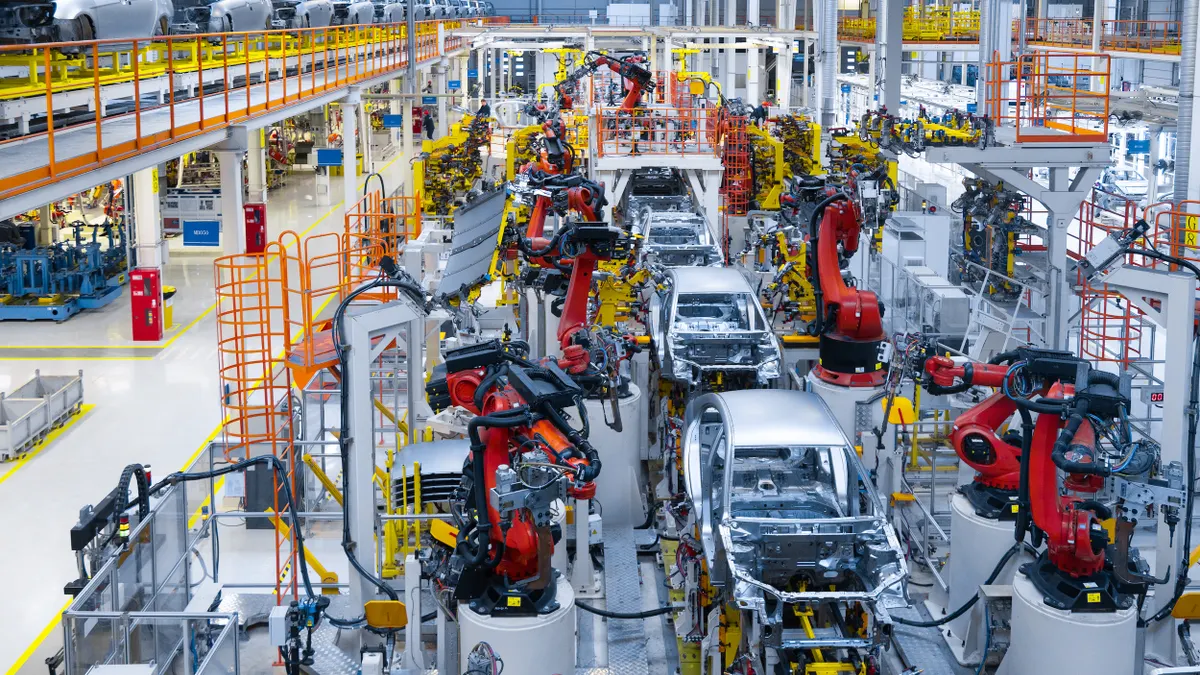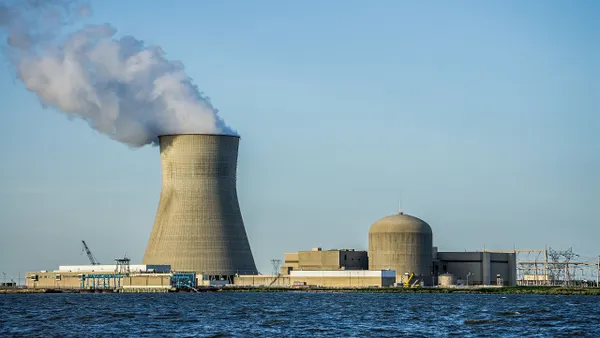Although demand improved in October, U.S. manufacturing contracted at a faster rate than the previous month driven largely by continued tariff uncertainty, according to the Institute for Supply Management’s latest Purchasing Managers’ Index.
ISM’s index registered 48.7% in October, down 0.4 percentage points compared with September. A PMI index below 50% indicates an industry in contraction.
All four of ISM’s demand indicators — new orders, new export orders, backlog of orders and customer inventories — improved from September, but their indices were below 50%. Notably, customer inventories were in the “too low” category, which ISM found encouraging for customer reorders in the near future, Susan Spence, chair of the ISM’s Manufacturing Business Survey Committee, said on a Monday morning call. However, increased costs and trade uncertainty could impact orders and operations.
“The biggest issue on the panelists' mind continue[s] to be on the tariffs of their supply chains and their cost structures,” Spence said. For every positive comment from ISM’s manufacturing participants in October, Spence said more than six respondents had negative feedback related to tariffs.
Regarding output, production deteriorated after expanding in September, and employment slowed. According to ISM, more than 67% of participants expressed that “managing head count is still the norm at their companies,” rather than hiring.
Meanwhile, inputs — such as supplier deliveries, inventories, prices and imports — were largely mixed. ISM reported supplier deliveries registered at 54.2% in October, slower than 52.6% the previous month. Manufacturing inventories contracted at a faster rate and prices continued to increase for the 13th consecutive month, Spence said. Supplier deliveries are represented by ISM’s only inversed index, meaning that a reading above 50% shows slower deliveries.
In addition to tariffs, ISM raised concerns about the broader manufacturing economy. Approximately 58% of the sector’s gross domestic product contracted in October, down from 67% in September. However, Spence said, the percentage of GDP in contraction is at 41%, up from 28% the previous month. Of the six largest manufacturing industries, only two — food, beverage and tobacco products and transportation equipment — expanded in October.
Recently, the United States and China have reached a temporary truce following a monthslong trade war, which Spence said is a “great start” to establishing more certainty across industries, “if it actually happens.”
“We’ve got to see the new orders coming in, export orders, new orders,” she said. “Until those start showing some consistent trends up and into expansion, I think we’re going to be where we are.”
S&P’s October PMI report gave a somewhat positive look at the sector, registering 52.5% in October, up 0.5 percentage points from September. The economy improved on rising output and new orders, according to the ratings agency. However, much of the growth came from the domestic market as exports faltered from tariffs.
Chris Williamson, chief business economist at S&P’s Global Market Intelligence, said in a statement that U.S. manufacturers reported a solid start for the fourth quarter, but “lift the hood and the picture is not so healthy.”
Williamson raised concerns about an “unprecedented rise” of unsold stock linked to weaker sales, which could trigger a downshift in production unless demand picks up again.
“Companies have also become less optimistic about the year ahead, with sentiment back down close to the gloomy levels seen around the April tariff announcements,” he said. U.S. trade policy uncertainties have dampened business spirits, Williamson added, exacerbated by domestic political concerns such as the federal government shutdown.
















